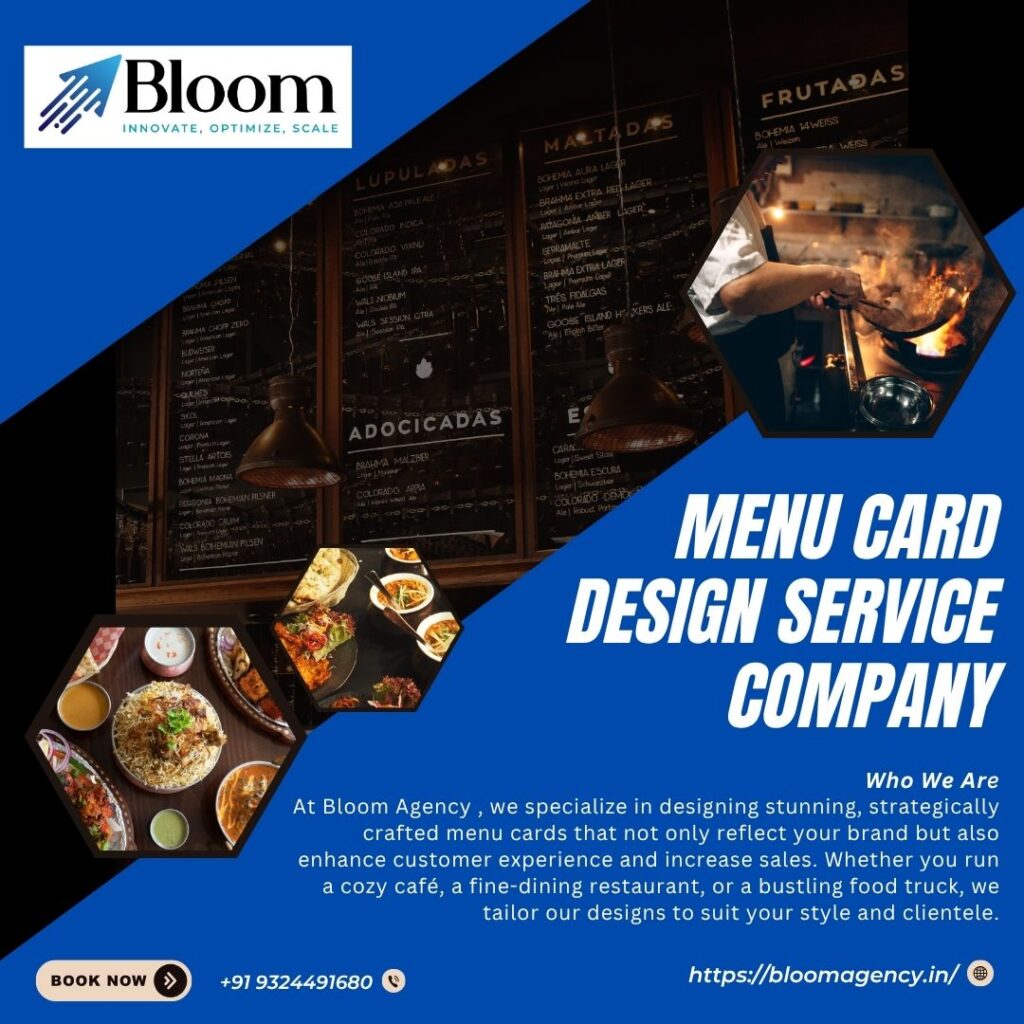Social Media Marketing for Restaurants: A Complete Guide and Top Tips For 2025
Social media today is more than just a place to laugh at memes, scroll through travel reels, or share photos of pets. It’s way more hardcore than it used to be. It’s like, if you’re running a business and you are NOT online then you are not even trying. Even the weird little corner shop that smells like pine and disappointment has a Facebook page now. Your favorite sushi spot? Yep, sliding into your feed alongside cat videos. Seriously though, whether you’re a chill café, some ripped fitness guide, business is out there throwing around hashtags. And if you just set up your own eatery, hoping people will magically find you because your dishes are awesome?
Hate to break it to you: you’ll need social media. it’s a game-changer.Helping you stand out so you’re not just shouting into the void with everyone else. Why Bother with Social Media? Because they give credibility and draw foot traffic, social media can do wonders.
That’s exactly why we put together this guide on restaurant social media marketing to help you get started and stand out.
Table of Contents
ToggleWhy Social Media Matters: A Few Key Stats
Social media’s influence on consumer behavior online and offline is staggering.
93% of people say online reviews shape their buying decisions.
84% trust online feedback as much as word-of-mouth.
68% are willing to pay up to 15% more if they know they’ll get a better experience.
75% of people have bought something they first saw on social media.
What to Expect from Social Media Marketing as a Restaurant
Investing in social media marketing for your restaurant requires effort, time and a budget. But when executed well, the ROI can be fantastic.
Your core goals?
Let people know you exist.
Convince them your spot is worth visiting.
Entice them enough to walk in and give it a try.
Let’s dive in.
1. Set Up Strong Restaurant Social Media Profiles
Make sure to customize your restaurant social media marketing strategy and register social media accounts on famous platforms like Facebook, Twitter, and Instagram. These accounts serve as your restaurant’s digital shop and face. Hence, make them to be in line with your restaurant’s identity and brand. Don’t forget to add your website, location, hours of operation, and engaging description. Eye-catching branding coupled with high-quality visuals will build basic trust and help in standing out.
A good profile includes your restaurant name, logo, and a brief but compelling description.
Ensure your contact info, location, and business hours are updated and easy to find.
Use branded colors, fonts, and images to create a consistent visual identity.
2. Leverage Social Media Monitoring
Every business needs to know how clients perceive a brand. This can be made easy by the use of social media monitoring programs. know monitors customer social media presences and opinions about the restaurant. Knowing what people are saying about your brand allows you to respond accordingly, manage feedback effectively, and take control of your brand image. This includes comments, influencer mentions, customer reviews, and many others.
Monitor your restaurant’s name, branded hashtags, and common misspellings to catch every mention.
Use tools like Mention, or Hootsuite to automate the process.
Identify and respond to both positive and negative mentions to build customer trust.
3. Post High-Quality, Mouth-Watering Photos
Before marketing your restaurant consider the power of photography in the food business. Marketing your restaurant without posting appealing images of your menu dishes, restaurant’s interior and exterior, as well as behind-the-scenes would be a loss. When taking, do it in natural light for vibrant colors which makes the food irresistible.
Share photos of best-selling dishes, seasonal specials, and chef’s picks regularly.
Invest in a good smartphone or hire a photographer to maintain high quality.
Tools like Canva and Lightroom can help you edit and brand your images.
4. Engage with Local Events and Trends
Irrespective of your local restaurant’s brand identity, your dine-in facility is an integral part of any community. Taking part in local causes and events can improve visibility and also support networking. Make use of social media platforms to showcase your contribution to such events and encourage a sense of community among your followers.

Join or sponsor local events like markets, marathons, or cultural festivals.
Run themed offers tied to holidays, local sports games, or global observances.
Post about community partnerships or customer stories to build loyalty.
5. Find and Invite Potential Customers
Social media serves as a source of new friends and restaurants for many people around the world. Social listening tools can be employed to make find these queries and issue helpful invitations to check out your restaurant. It’s a very helpful marketing strategy to gain new customers.


Use social media monitoring to find posts asking for food or restaurant suggestions.
Reply with a warm, personalized message introducing your restaurant.
Offer a small incentive like a discount or free appetizer to encourage first-time visits.
6. Host Fun and Creative Social Media Contests
Throw in Some Fun Social Media Contests Alright, you wanna spice things up online? Yeah, host a contest. Trust me, people love a little friendly competition. Doesn’t matter if it’s a goofy photo challenge or a “caption this food fail”—just keep it interesting, and watch folks pile in. Toss in prizes like gift cards , and tell everyone to tag their buddies and reshare your posts. That way, your reach jumps, and your brand actually gets some traction. Just don’t forget to spell out the rules (nobody likes confusion), and a hashtag on it. Make it easy to track, to avoid losing your mind in the chaos.
Run “caption this photo” contests with food pics and reward winners with gift cards.
Encourage followers to tag friends and share posts to expand your reach.
Make sure your contest rules are clear, and use a unique hashtag for tracking.
7. Use Emojis to Enhance Engagement
Sprinkle in Those Emojis Honestly, emojis are kinda the secret sauce on socials. Hit your post with a 🍕 or a 🍔 and, suddenly, everyone stops scrolling. It’s basic, but it totally works. Just don’t go dropping in ten emojis at once unless you want people to think your cat walked on the keyboard. Pick one or two that actually match your food—no random unicorns unless you’re, I dunno, serving rainbow cake. Emojis break up walls of text and make your captions pop, so why not use them to your advantage. Use emojis that match your cuisine—🍕 for pizza, 🍣 for sushi, ☕ for coffee.
Don’t overdo it—stick to 1–3 emojis per post to keep it classy.
Use emojis to highlight key messages or break up long blocks of text.
8.Show Off the Messy, Weird, Real Stuff
People are nosy—they want to see the unfiltered side, not just fancy food pics with some hipster filter. Let ‘em peek into your kitchen. Show your cooks goofing off, prepping meals, or surviving the lunch rush. Celebrate little wins—someone’s birthday, a perfect latte, your dishwasher wearing a weird hat. That kinda stuff makes your place feel real. Toss up some behind-the-scenes chaos and let the personality of your team shine through. It’s way more interesting than another boring plate shot, I promise.
Set up Google Alerts and review aggregator tools to track mentions.
Respond to every review politely and professionally, whether good or bad.
Use feedback to improve food, service, or ambiance based on real experiences.
9. Monitor and Protect Your Online Reputation
Watch Your Reputation Like a Hawk Online reviews? they can totally make or break you. People trust strangers on the internet more than their own taste buds, so you gotta keep tabs. Set up Google Alerts or whatever tool you like to spot new mentions. When someone leaves a review—good, bad, or ugly—jump in and reply . Thank the happy ones, fix stuff for the angry ones. And if you keep hearing the same feedback, maybe it’s time to tweak the menu.
Use geo-targeting to reach potential diners within a specific radius.
Create ads for lunch specials, events, or new menu items with clear calls to action.
A/B test different images and captions to see what performs best.
10. Run Targeted Facebook Ads
Targeted Facebook Ads—Not Just for Oversharers If you’re not using Facebook ads to laser in on people who live near your joint and actually eat your kind of food, what are you even doing? Get picky—target by age, interest, what they had for breakfast (kidding, but it’s close). Push out promos for lunch deals, events, whatever’s new. And don’t stick with one boring image or caption. Mix it up until you find what gets people clicking. Oh, and always, always have a big, obvious button telling them what to do next—order, reserve, stare longingly, whateverPost stories of your chefs preparing dishes or staff celebrating small wins.
Highlight employee spotlights to introduce the team behind the brand.
Share fun moments like setting up before opening or prepping for a busy night.
11. Collect Feedback Without Interrupting Customers
A good portion of individuals would not use their time posting feedback for your restaurant. Monitor social media platforms for comments. For instance, customers describing a wonderful dessert or complaining about waiting long can be tracked even when not directly tagging your brand.
Use tools to find untagged mentions of your restaurant.
Look for trends in feedback (e.g., “portions too small” or “great service”).
Turn feedback into improvements and post about changes you’ve made.
12. Use Instagram Hashtags Wisely
On Instagram, hashtags act as virtual pointers. With the proper use of hashtags, your photos will be featured in relevant searches aiding new followers and customers.
Mix broad hashtags (#foodie, #instafood) with niche and local ones (#NYCpizza).
Create a branded hashtag unique to your restaurant for customers to use.
Join trending hashtags when relevant to gain visibility during peak times.
13. Partner with Food Influencers
It is very resourceful to work with influencers since they can extend your reach to new and bigger audiences. Authentic exposure and followers can be gained by inviting local food bloggers and content creators to sample your dishes.
Identify micro-influencers in your area who post about dining or lifestyle.
Offer them a complimentary meal in exchange for an honest review or post.
Repost their content on your pages and tag them to build long-term relationships.
14. Share Customer-Generated Content
While attending your restaurant, your customers are actually advertising your business. By reposting customer’s content, restauranteurs show appreciation, foster trust, and build community. It incentivizes others to share their experiences as well.
Repost photos and stories with proper credit to the original poster.
Run campaigns encouraging customers to use a specific hashtag when posting.
Feature top posts weekly to keep your feed fresh and follower-centric.
15. Promote with Geo-Targeted Tweets
Even if Twitter is not your focus, it can be especially useful to your marketing—highlighted even more with promoted tweets. Using geo targeting, ads can be served to patrons close to your restaurant during peak hours.
Promote tweets showing off daily specials or event announcements.
Target keywords like “lunch near me” or “best burgers in [your city]”.
Use Twitter analytics to measure ad performance and refine your strategy.












Rahul M.
B2B Service Provider